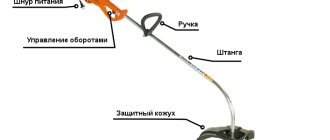What it looks like: photo of verbena and its flowers in a flowerbed
The height of the bush can reach 1-1.2 m. Stems can be of the following types:
- creeping, erect and prostrate;
- smooth or drooping.
The leaves of verbena, as well as their location, can be:
- whole, dissected or feathery incised;
- jagged or oval-elongated;
- rarely whorled.
As for the flowers, they are also replete with variety:
- in the form of a 5-toothed cup;
- in the form of a 5-lobed corolla;
- collected by brush, spikes or paniculate inflorescences.
Flower color can be:
- dark blue and light blue;
- yellow;
- white;
- dark red;
- salmon;
- pink.
Below is a photo of perennial verbena flowers.
Varieties of flowers
The high popularity of verbena in floriculture is due to the unpretentiousness, attractiveness of the flower and its wide variety of species. Below are the names and descriptions of various types of verbena flowers, as well as their photos:
Canadian. Belongs to perennials.
Under favorable climatic conditions, flowering can last until the end of October. The bush is short - 20 cm. The shape of the leaves is openwork, the inflorescences are in delicate shades - white, pink, lilac.
Tough. A variety of verbena that is grown in Russia as an annual, despite the fact that it is considered a perennial.
The color of the inflorescence is lilac. Hard, pubescent, elongated leaves are concentrated on the branched stems.
Buenos Aires. This plant variety should be classified as tall, since the stems can grow up to 1 m.
The perennial subshrub or shrub forms many lateral branches with thin leaves of a jagged and elongated shape.The inflorescences are umbrella-type, the leaves are jagged and elongated. The perennial blooms are represented by small lilac flowers.
Hybrid. The variety was obtained from several species.
The plant is herbaceous, its height reaches 50 cm, and has many side shoots. The leaves are drooping and shaped like a triangle. The variety is distinguished by a wide palette of flowers. There are 30 types in total - from the lightest to the darkest. Find out more about hybrid (finely cut) verbena here.
Important! The main advantage of verbena over other types of ornamental flowering crops is that it blooms for a long time and has high seed germination even if stored for 2 years.
Read more about verbena varieties Buenos Aires, Bonar and others here.
Also, lovers of verbena may be interested in reading about ampelous verbena and its medicinal properties and its benefits and contraindications.
Popular varieties and types
Verbena is a popular perennial. However, in regions characterized by a temperate climate, the crop is cultivated as an annual one. Today, many types of verbena are known, which differ in appearance and basic characteristics.
Lemon
This fragrant shrub reaches 1.5-2 meters in height. It has olive-brown stems that begin to branch from the very base. They are covered with whorls of whole, bright green leaves. If you rub the foliage, a pleasant spicy smell will appear, in which citrus and mint notes are felt. That is why the variety is called lemon.
Buenos Aires
This variety of verbena is considered tall. It reaches 1.2-1.5 meters in height. Verbena Buenos Aires produces many shoots that are highly durable and easily support many inflorescences. The culture does not require tying up.
The Buenos Aires variety has small flowers of a lilac-lilac hue. They form umbrella inflorescences. The culture blooms until late autumn. It is worth collecting seeds in mid-September. When growing a plant in seedlings, it will begin to bloom in July. If you sow the seeds directly into the soil in May, the crop will bloom in August.
See also
Description and best varieties of spirea sulfur, rules for planting and care in open groundRead
This plant is grown in different types of soil. It easily tolerates slight shade. In favorable conditions, it will be possible to obtain large openwork bushes, which reach 1-1.5 meters in diameter. Although this plant is considered a perennial, it is often grown as an annual.
Bonarskaya
This subshrub has erect stems. They reach 1-1.2 meters in height. Bonar verbena is actively used for decorative purposes. The shoots have a slightly branched structure. They are covered with lacy emerald-colored leaves and dense purple inflorescences.
Hybrid Ideal
This beautiful hybrid variety is considered low growing. It reaches 30 centimeters in height. The color range of plants is striking in its diversity. Verbena variety Ideal has blue, red, white, pink flowers. Cherry and lilac shades are also found.
The plant has many spherical inflorescences. Their diameter does not exceed 5 centimeters. The plant is characterized by rapid vegetative growth. Flowering begins in June and continues until October. The culture is actively used to decorate flower beds and create floral compositions.
Finely dissected
This variety of verbena is also called swamp verbena. It grows in South America as a weed. The plant is characterized by split leaves. Finely cut verbena has delicate lilac flowers. Their diameter is 1.4-1.5 centimeters. The culture has creeping stems.
Tough
The plant got its name due to the characteristics of its leaves. They are tough and have sharp tips. The culture begins to bloom in July. This process continues until September. Verbena of this variety is distinguished by lilac flowers that form hemispherical inflorescences. The culture is resistant to frost. It reaches 35-45 centimeters in height.
Spear-shaped
The homeland of this culture is North America. There it grows along the banks of rivers and lakes. Therefore, it is recommended to grow the plant in moist soils that have a rich composition. Verbena can survive winter in the ground only in Europe.
The plant looks elegant. It reaches 1.5 meters in height. The culture has small purple or blue flowers that form elongated inflorescences. They are shaped like a spear. That is why verbena received the name spear-shaped. It serves as a real decoration for gardens in a natural style.
Hybrid Quirk
This variety was created based on several species. This is a herbaceous plant that does not exceed 50 centimeters in height. The culture produces many side shoots. The leaves are covered with small fluff and are shaped like a triangle. The Quirk variety has a wide color palette.
The variety was obtained from several species. The plant is herbaceous, its height reaches 50 centimeters, and has many side shoots.
Straight
This verbena is considered relatively winter-hardy. It is widespread in the central United States. A characteristic feature of the culture is the grayish leaves. Straight verbena has lavender inflorescences that resemble a spikelet in shape. The culture can easily withstand a temperate climate provided it is covered for the winter.
See also
Why do the leaves of the Vanka flower turn yellow and fall off and what to do about it? Read
Julia
The plant of this variety is covered with violet-purple flowers, in the center of which there are white eyes. The culture begins to bloom in the second half of June. The height of the bush plant reaches 40 centimeters.
Mammut
This is one of the oldest varieties. Its flowers, unlike many modern hybrids, have a pronounced aroma. The plant is distinguished by creeping stems, the length of which reaches 50 centimeters. The inflorescences are large and have a slightly elongated shape. This plant is great for planting in pots and flowerpots.
Etna
This is a bush plant that reaches 0.5 meters in height. It is characterized by dense inflorescences that are shaped like an umbrella. The flowers are small and have a bright red hue. Inside there is a star-shaped cream-colored peephole. The culture begins to bloom quite early - already in May.
Where does it grow?
This decorative culture arose on two continents at approximately the same time. These are American (from Chile to Canada) and Eurasian (Caucasus, Central Asia). Today you can see some types of verbena even in the countries of the Far East and throughout Europe.
For many varieties of crops, the subtropical or tropical climate of South and Central America remains favorable. This includes a wild plant. But in Russia the plant grows only in the southern regions, where it is warm and quite humid.
But due to prolonged cultivation, it was possible to develop stronger, frost-resistant varieties that do not require close care, while they give a lot of positivity and good mood with their appearance and ease of care.
Rules of care
Growing verbena is absolutely not difficult, so this is a unique opportunity for those who are just about to start growing a decorative flower at home. Care comes down to the following activities:
Watering. During intensified growth and intensive flowering, the crop requires regular irrigation. Starting in mid-summer, water the plant less frequently. It is enough to moisten the soil 2-3 times a week. One bush will require approximately 5 liters of water. The soil should not be allowed to become waterlogged, as this can cause the development of diseases.- Loosening the soil. This procedure is extremely necessary for the plant during extreme heat, when abundant irrigation is performed. Loosening will saturate the root system with the necessary oxygen.
- Removing weeds. If planting verbena flowers was done in a group, then weed crops should be removed during the first time after planting, when the bushes have not yet gained strength and have not grown. If verbena flowers are grown as a single plant, then weed crops should be constantly removed.
- Mulching. It should be carried out immediately after planting this beautiful herbaceous plant in open ground. Use rotted leaves or sawdust for mulching. Such actions will allow the gardener to loosen the soil less often and get rid of weeds.
- Feeding. If you apply mineral fertilizers in a timely manner, the plant will bloom for a long time and not get sick. Apply organic matter once throughout the season. If you oversaturate the soil with nitrogen, this will have a detrimental effect on flowering. Use mineral fertilizers 3-4 times during the entire growing season.
- Stimulation of flowering. If you apply fertilizers correctly and promptly remove wilted elements, this allows you to get long and abundant flowering, which lasts until the first frost.
Verbena propagation by cuttings
Rare varieties of verbena that do not produce seeds can be propagated by cuttings. With this method of propagation, all the qualities of the mother bush will be preserved. Procurement of planting material begins in autumn. To do this, the mother bush is dug up with a large ball of earth and placed in a cool room (for example, in a basement) for the winter.
In early spring, the tops of shoots with 4-6 pairs of leaves are cut off for cuttings. The lower incision is made at a distance of 1 cm from the outermost kidney. All leaves except the top two are removed.
Germination of Verbena officinalis cuttings
Cuttings are germinated in containers with sand or sand-peat mixture. The planting material is deepened to the first bud (i.e. 1 cm). The substrate in containers should always remain moist. To do this, cover the containers with cuttings. Within three weeks, the cuttings will begin to develop a root system, after which new shoots will begin to grow. Rooted cuttings should be planted in open ground at the same time as seedlings.
Reproduction methods
Seeds
The seed propagation method is suitable even for the most inexperienced gardener. March is considered the optimal time for planting. In winter, the germination process occurs slowly, but as soon as spring arrives, the plants come to life faster. You will be able to see the first shoots in 2 weeks.
Just before planting, verbena seeds should be soaked in a biostimulant in advance. It allows the plant to grow and develop faster. Place planting material evenly in a prepared container filled with a damp substrate. Cover the container with glass and film to create a greenhouse effect.
REFERENCE! The container with seeds should be in a dark room where the temperature is 25 degrees. If the specified temperature has been observed, then after 3 days the first sprouts will hatch.
After their formation, place the container with seedlings in a cooler climate.
Irrigation is carried out by spraying. Excessive soil moisture is unacceptable. When planting seeds in separate cups, picking is not required. If you grow seedlings in large containers, then as soon as the first leaf is formed, you will have to pick.
After transplanting young plants into separate containers, you need to wait 2 weeks so that they can take root. After this, nitrogen-containing fertilizers can be applied. In tall plants, to form a lush bush, you need to pinch the top at the initial stages of development.
The seedlings should be transplanted into open ground in early June. Just pre-harden it before doing this. To do this, take the seedlings outside, increasing the time of such a “walk” every day. When planting, maintain a distance of 20-30 cm between plants.
Cuttings
Performed in the spring. To do this, you need to use the upper shoots. Cut them off as carefully as possible, leaving a cutting with 4 pairs of leaves. The lower part of the cutting should be cleared of foliage and buried in the ground.
For planting verbena, as a beautiful herbaceous plant for open ground, a substrate consisting of sand and peat is best suited. Until the root system of the cuttings is completely formed, keep them under a transparent film.
Find out more about growing verbena from seeds and propagating by cuttings here.
Planting in open ground
Before planting perennial verbena in open ground, seed stratification should be carried out. They are placed in a damp cloth, wrapped in a dark bag and placed in the refrigerator for 5 days. In warm climates, it is possible to germinate seeds using the seedling method, planting them in open ground.
Obtaining verbena by seedlings should occur in March. Pots with humus are prepared in advance. Sand is mixed well in them and filled with seeds, and a little humus is distributed on top. The containers are covered with glass and placed in a room with an air temperature of +18-20 °C. 3 weeks after germination, the seedlings should be moved to a cooler place.
The main condition for good flowering of the plant is regular spraying of the leaves.
In May, the plants have 2 true leaves, at this time they pick and transplant the bushes into separate pots. Grown seedlings can be moved to open ground with sunlight and fertile loam. For the full development of the root system and healthy flowering, you should maintain a distance when planting between plants. Low-growing varieties are planted at a distance of 20 cm from each other, creeping varieties - 25-30 cm.
Diseases and pests
With proper care of verbena, it is possible to avoid the appearance of various diseases, because the plant’s immunity is quite stable. Problems can arise if gardeners overwater their flowers or the weather is too hot outside.
Then there is a possibility of developing powdery mildew. This is a fungal disease in which the leaves begin to dry out. You can cure it with cheese, using Saprol or Fundazol.
The plant may be affected by aphids or mites. To get rid of them it is worth using insecticides. Excessive moisture can lead to the development of blackleg, spotting and rot.
NOTE! It is quite difficult to combat molds and nematodes, which lead to the development of these diseases, so it is necessary to pay special attention to prevention.
Reproduction, planting and care
Flower propagation
Propagation by seeds does not require additional manipulation. But there are still certain requirements:
- the procedure occurs only after a stable warm temperature regime . If you want to plant the plant a little earlier, then a greenhouse or container is suitable for this.
- the seeds are not poured into the hole, but scattered evenly over the surface of the soil . If the temperature is above 20 degrees, the first shoots are visible within 2-3 days. If planting was done in a container, then after that it is transferred to a cool room.
- Watering is carried out carefully . Young shoots are very sensitive to excess water. It is better to use a spray bottle.
To propagate verbena by cuttings, preparation should begin in the fall. You need to carefully dig up the plant, do not remove the soil from the roots, and store it in a room with a stable, cool temperature. The process itself begins in March-April, if the garden planting is intended for open ground. For container planting, cuttings are available at any other time of the year. The most suitable material is the top of the sprout, cut correctly. It must have at least 4 leaves on it. A cut of an adult plant is treated with crushed coal. For rooting, it is better to take a mixture of peat and sand. The depression is not large, not lower than the level where the lower leaves grew. The container must be covered with cellophane. It takes 14 to 20 days for the root system to develop.
Selecting a location and planting verbena
There will be no problems with choosing a place to grow. Any piece of land will do. Designers often use this and decorate unsightly areas under tall trees and other places where nothing grows with culture. But, if there is a choice, then it is better to make it in favor of a sunny and open area. Verbena can even withstand direct sunlight. It can be grown not only in open ground, but also in special containers (vases, plant pots, pots). In this case, even a small container is sufficient for the root system.
Loamy soil is best suited. But it doesn't really matter. It is important to provide it with looseness and drainage. The plant grows well even in heavy soil. Gardeners add sand to it. For the drainage layer, fragments of brick, stone, crushed stone or expanded clay are used. Excessive moisture is detrimental to the flower; drainage is required. Care does not require much time and effort. It is enough to cultivate the soil, water and fertilize. To the great happiness of gardeners, healthy verbena rarely suffers from insect pests or diseases. It is important to thin out the seedlings in time and closely monitor watering, avoiding stagnation of water.
Plant care
If the bush is planted singly, then weeds must be controlled throughout the growing season. If there are a lot of plants, weeds can only cause harm at first. Once the vervain clearing has grown, weeding is no longer required. If the area has a hot, dry climate, loosening after watering may be necessary. In other cases there is no need for it. Watering plays a very important role in caring for verbena. It ensures active growth and long flowering. Irrigation is best done by spraying. Complex fertilizers are suitable: both organic and mineral. Everything should be in moderation. They are applied once every 3 months.











